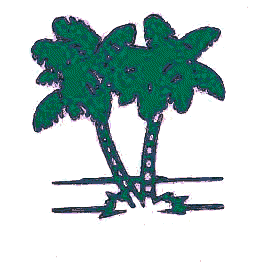 GULF COAST LANDSCAPING
SERVICES, INC.
GULF COAST LANDSCAPING
SERVICES, INC.
![]()
![]()
![]()
![]() (click here) Go to our New WebSite ! !
(click here) Go to our New WebSite ! !
|
|
|
|
FOR IMMEDIATE RELEASE Details and Diligence: A Guide to Seasonal Rotor Maintenance
An irrigation system's overall efficiency is directly related to how well
it's adjusted and if repairs are done correctly and in a timely manner. If the
systems is not properly maintained water waste and inferior appearance of turf
and landscaped areas are a sure bet. During the inspection we check each rotor
for proper arc- adjustment, thatch build up, proper rotation, worn nozzles, and
worn seals. Occasionally, we may also find cracked cases and clogged screens.
Most of these are simple to detect and fix. However, it requires time spent to
watch each rotor operating. The
following is a checklist for for items we review for seasonal rotor maintenance:
Ø
Arc Adjustment--
It's important to spend the time to make sure that each part-circle rotor
moves completely through its properly adjusted arc pattern. Children playing and
vandals sometimes change the rotor's arc setting. Ø
Thatch Build Up--
As grass grows it develops thatch. Thatch is partially decomposed organic
material between the grass blade and the soil. If the grass and thatch
interferes with the water stream from the nozzle it may need to be removed and
thinned. In older systems it may be necessary to dig up the rotor attach a riser
and physically raise the height of the rotor.
Ø
Rotation-- As with
arc-adjustment it's very important to observe each rotor in operation to ensure
that it rotates. If the rotor does not rotate it must be replaced with a
comparable rotor and nozzle. Ø
Worn or Clogged Nozzles--
If a nozzle is worn and/or clogged the rotor will have a reduced radius
of throw and the water stream will appear rough. Worn or clogged nozzles usually
occur in older systems or systems that have a dirty or gritty water source.
Nozzles must be replaced with the manufacturer's recommended nozzles.
Ø
Worn Seals--
A rotor with worn seals may display a flow of water between the rotor's
turret and the cap. However worn seals may only exhibit a slight weeping between
the rotor turret and the cap. In either case the rotor internals usually need to
be replaced. Ø
Cracked Case--
This problem can be difficult to detect. It will appear as an unusually
wet area at the rotor. This problem is usually found along a driveway and is the
result of the rotor being run over by a vehicle. Sometimes it is also the result
of an improperly winterized system. To correct the problem the rotor must be
removed and the case replaced. However there may be hidden damage to the rotor
turret or the drive mechanism. It is generally more sensible to replace the
entire rotor. Ø
Clogged Screens--
Manufacturers provide screens at the base of the rotor or turret to trap
dirt and debris that would otherwise clog the nozzle. When enough debris is
trapped the blockage will cause low pressure, restrict flow, and reduce the
radius of throw. Clogged screens
are commonly caused by: 1.
A buildup of
dirt and debris that has been introduced to the irrigation system as the result
of a repair. 2.
Broken pipes
downstream of the rotor that can pull dirt into the line
3.
Algae buildup To
correct a clogged screen, the rotor internals must be removed and the
line completely flushed. Any debris must be removed from the screen. It
is important to take care while flushing the line so that no additional debris
is washed back into the system.
Rotor maintenance is fairly simple if you follow a few simple steps. In
fact the time spent inspecting the system and making minor adjustments and
repairs will help an irrigation system perform well for many years. Moreover
your efforts will not only ensure that the landscape remains healthy and
beautiful it will virtually guarantee a satisfied customer. *adapted from John Deere Landscapes Issue Number 2 For More Information Contact: |
|
Send mail to webmaster@gulfcoastlandscapingservices.com with
questions or comments about this web site.
|